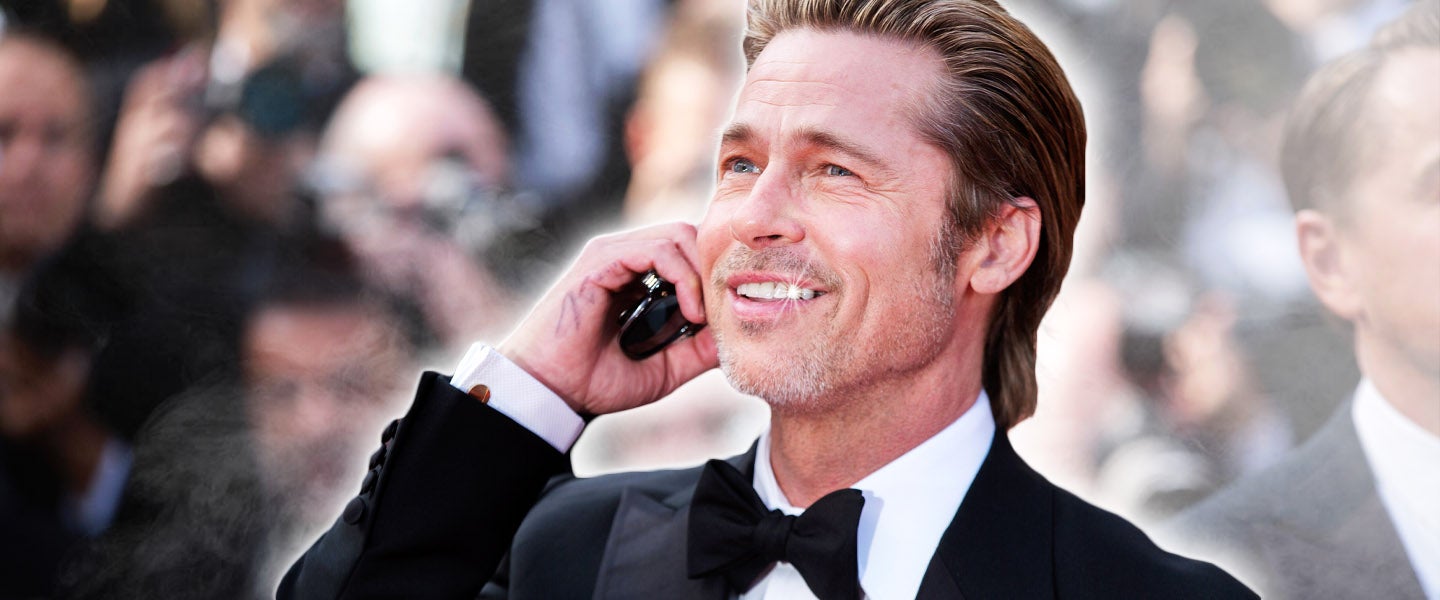Whatever else you want to say about Quentin Tarantino’s Once Upon a Time in Hollywood — and I’ve already said far too much — you can’t deny that Brad Pitt is key to its conjuring of a cinematic age. Slick, easygoing, fast-driving and offensively handsome, he somehow makes eating mac and cheese straight from the pot look glamorous, and the sheer charisma he radiates is enough to make most characters forget that he, uh, probably murdered his wife. Also, it bears remarking that he doesn’t strike one as a man currently in his mid-50s.

The film’s nostalgia for the kind of cool customer Pitt portrays is hardly limited to Tarantino’s vision of late 1960s L.A., however — it’s effective insofar as the actor himself lately seems like the last of his breed: a beautiful man whose star power resides above and apart from the vicissitudes of his brutal industry. It’s funny to watch him as a trailer-dwelling nobody whose stuntman work is fading away because it’s impossible to imagine him in actual obscurity. He will always be Brad Pitt, with Brad Pitt’s face and aura. What else could he ever need?
And yet, it’s as if by typifying the white, chiseled, mid-century leading man, he emphasizes the absence of anyone else on that plane, as New Yorker writer Doreen St. Felix observed on Twitter:
brad pitt is the last good-looking white man
— doreen st. félix (@dstfelix) July 29, 2019
The replies to St. Felix only strengthened her case. Chrises Evans and Hemsworth? Generically attractive guys overshadowed by their superhero roles. Steve Carell? More of a cute dad. Adam Driver? Belongs to a generation of wonky dudes with fuckboy vibes. Other white male sex icons in Pitt’s orbit haven’t aged as well, physically and/or reputationally (ahem, Mel Gibson, Alec Baldwin, Ben Affleck). Now, not everyone finds Pitt to be an expression of some platonic ideal, and countless younger, upcoming actors can “get it,” as they say — it’s just that he stands as a link to an older standard: to Robert Redford and Paul Newman, or Cary Grant and Gregory Peck.
that’s someone’s dad at a graduation dinner party at buca di beppo
— ryan christopher coleman (@repulsivecream) July 30, 2019
Butterface
— leslie nope (@LeslieNope_) July 29, 2019
No not potato face!!
— Javachik (@javachik) July 30, 2019
What could it mean to accept Brad Pitt, theoretically, as the last male symbol in that classical mold? For one, it might mark an end of the mass consensus and mainstream celebrity we’ve always associated with A-list white actors, who for a century served as the de facto protagonists in any story filmmakers were allowed to tell. Pitt is no doubt revered as he is in part because he achieved a pop-cultural saturation that’s becoming less and less plausible by the day, between the proliferation of entertainment platforms and an overdue influx of diverse narratives that don’t necessarily require or elevate his type. Even George Clooney, arguably the only man who occupies a similar place in the pantheon, isn’t headlining blockbusters much anymore, and his involvement can function, as Pitt’s does in Once Upon a Time, as a signifier of yesteryear. His second most recent role — for the Coen brothers’ 2016 comedy Hail, Caesar! — was a not-too-clever 1950s studio stud miscast in a Biblical epic. It’s a winking self-parody.
Obvy beauty is also in the eye of the beholder etc but if we're talking certain markers of empirical hotness in wm, I could line up Aaron Taylor-Johnson, Charlie Hunnam, Ian Somerhalder, Garrett Hedlund, Elder Hemsworth, and more. Ppl might swoon but how many could name 'em all
— @PiaGlenn (@PiaGlenn) July 31, 2019
Naturally, however, the movie establishment that sold us a sequence of square jaws and symmetrical noses for decades won’t go quietly into that good night. This is what occurred to me when I saw the uncanny trailer for Martin Scorsese’s upcoming film The Irishman, which deployed fantastically expensive “de-aging” effects to make Robert De Niro, Al Pacino and Joe Pesci appear 30 years younger than they are. It’s an odd, risky choice — to remake an actor’s visage is to meddle in his work — but you understand right away why it was made. A Scorsese crime drama at this point in his career can’t be populated with mere actors; it requires legends. No fortysomething man has taken up the mantle of a Pacino or De Niro at that age, since it’s no longer there to take, so you’re stuck with an underwhelming name or the voodoo of digital immortality. The next step is a movie featuring a bunch of dead men preserved in eerie avatars.
Watch the first trailer for Martin Scorsese’s crime epic THE IRISHMAN, making its world premiere as the opener of the 57th #NYFF. pic.twitter.com/PLWXpd1tPf
— New York Film Festival (@TheNYFF) July 31, 2019
It’s heartening, though, that the best-known American actors today comprise a far greater range of backgrounds, and that there are increasing opportunities for the less famous in Hollywood to connect with niche audiences. The unraveling of conditions that used to create marquee megastars, and of the biases that stalled equal performers, is hardly a tragic loss — it offers, instead, a path to more democratic and representative art. The Brad Pitt archetype won’t entirely disappear, either, but it will cease to dominate our idea of a successful actor, and we’ll shed the corresponding assumption that nobody else can anchor a film.
And as for Pitt? Elder statesman mode should suit him just fine.


